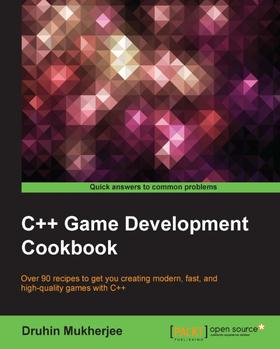
C++ Game Development Cookbook
¥334.25
Over 90 recipes to get you creating modern, fast, and high-quality games with C++About This Book·Level up your game programming skills with insightful recipes on building games in C++·Analyze the less commonly discussed problems with C++ applications to develop the best games·Improve the performance of your games with the new multi-threading and networking features of C++11Who This Book Is ForThis book is ideal for aspiring game developers who are proficient in C++ programming and are interested in developing games with C++. Some basic knowledge of game programming will be useful but is not necessary.What You Will Learn·Explore the basics of game development to build great and effective features for your game·Develop your first text-based game using the various concepts of object-oriented programming·Use algorithms when developing games with various sorting and searching techniques·Exploit data structures in a game's development for data storage·Create your first 2D game using GDI library and sprite sheet.·Build your first advanced 2D game of space invaders using patterns such as observer, fly-weight, abstract factory, command, state, and moreIn DetailC++ is one of the preferred languages for game development as it supports a variety of coding styles that provides low-level access to the system. C++ is still used as a preferred game programming language by many as it gives game programmers control of the entire architecture, including memory patterns and usage. However, there is little information available on how to harness the advanced features of C++ to build robust games.This book will teach you techniques to develop logic and game code using C++. The primary goal of this book is to teach you to create high-quality games using C++ game programming scripts and techniques, regardless of the library or game engine you use. It will show you how to make use of the object-oriented capabilities of C++ so you can write well-structured and powerful games of any genre. The book also explores important areas such as physics programming and audio programming, and gives you other useful tips and tricks to improve your code.By the end of this book, you will be competent in game programming using C++, and will be able to develop your own games in C++.Style and approachEvery recipe of this guide covers a task that will help you build different aspects of a game, such as taking player input and displaying the output, using control flow to implement decision making, and so on. Each recipe begins with gentle introduction and key concepts, has illustrated examples of use, and ends with a detailed but informative description of the inner workings.
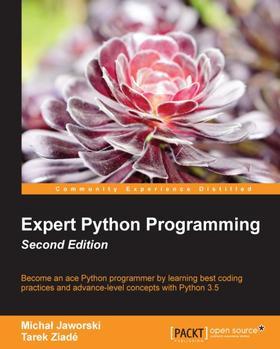
Expert Python Programming - Second Edition
¥334.25
Become an ace Python programmer by learning best coding practices and advance-level concepts with Python 3.5About This Book·Based on the latest stable version of Python (version 3.5)·Creating well manageable code that will run in various environments with different sets of dependencies·Packed with advanced concepts and best practices to write efficient Python codeWho This Book Is ForThe book would appeal to web developers and Python programmers who want to start using version 3.5 and write code efficiently. Basic knowledge of Python programming is expected.What You Will Learn·Conventions and best practices that are widely adopted in the python community·Package python code effectively for community and production use·Easy and lightweight ways to automate code deployment on remote systems·Improve your code's quality, reliability, and performance·Write concurrent code in python·Extend python with code written in different languagesIn DetailPython is a dynamic programming language, used in a wide range of domains by programmers who find it simple, yet powerful. Even if you find writing Python code easy, writing code that is efficient and easy to maintain and reuse is a challenge.The focus of the book is to familiarize you with common conventions, best practices, useful tools and standards used by python professionals on a daily basis when working with code.You will begin with knowing new features in Python 3.5 and quick tricks for improving productivity. Next, you will learn advanced and useful python syntax elements brought to this new version. Using advanced object-oriented concepts and mechanisms available in python, you will learn different approaches to implement metaprogramming. You will learn to choose good names, write packages, and create standalone executables easily.You will also be using some powerful tools such as buildout and vitualenv to release and deploy the code on remote servers for production use. Moving on, you will learn to effectively create Python extensions with C, C++, cython, and pyrex. The important factors while writing code such as code management tools, writing clear documentation, and test-driven development are also covered.You will now dive deeper to make your code efficient with general rules of optimization, strategies for finding bottlenecks, and selected tools for application optimization.By the end of the book, you will be an expert in writing efficient and maintainable code.Style and approach An easy-to-follow guide that covers industry followed best practices in Python programming
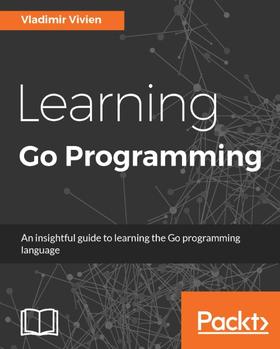
Learning Go Programming
¥371.39
An insightful guide to learning the Go programming languageAbout This Book·Insightful coverage of Go programming syntax, constructs, and idioms to help you understand Go code effectively·Push your Go skills, with topics such as, data types, channels, concurrency, object-oriented Go, testing, and network programming·Each chapter provides working code samples that are designed to help reader quickly understand respective topicWho This Book Is ForIf you have prior exposure to programming and are interested in learning the Go programming language, this book is designed for you. It will quickly run you through the basics of programming to let you exploit a number of features offered by Go programming language.What You Will Learn·Install and configure the Go development environment to quickly get started with your first program.·Use the basic elements of the language including source code structure, variables, constants, and control flow primitives to quickly get started with Go·Gain practical insight into the use of Go's type system including basic and composite types such as maps, slices, and structs.·Use interface types and techniques such as embedding to create idiomatic object-oriented programs in Go.·Develop effective functions that are encapsulated in well-organized package structures with support for error handling and panic recovery.·Implement goroutine, channels, and other concurrency primitives to write highly-concurrent and safe Go code·Write tested and benchmarked code using Go's built test tools·Access OS resources by calling C libraries and interact with program environment at runtimeIn DetailThe Go programming language has firmly established itself as a favorite for building complex and scalable system applications. Go offers a direct and practical approach to programming that let programmers write correct and predictable code using concurrency idioms and a full-featured standard library.This is a step-by-step, practical guide full of real world examples to help you get started with Go in no time at all. We start off by understanding the fundamentals of Go, followed by a detailed description of the Go data types, program structures and Maps. After this, you learn how to use Go concurrency idioms to avoid pitfalls and create programs that are exact in expected behavior. Next, you will be familiarized with the tools and libraries that are available in Go for writing and exercising tests, benchmarking, and code coverage.Finally, you will be able to utilize some of the most important features of GO such as, Network Programming and OS integration to build efficient applications. All the concepts are explained in a crisp and concise manner and by the end of this book; you would be able to create highly efficient programs that you can deploy over cloud.Style and approachThe book is written to serve as a reader-friendly step-by-step guide to learning the Go programming language. Each topic is sequentially introduced to build on previous materials covered. Every concept is introduced with easy-to-follow code examples that focus on maximizing the understanding of the topic at hand.

Secrets to Pricing and Distribution: Ebook, Print and Direct Sales
¥30.88
Once you have a finished book, you need to get it into readers’ hands. Loading your book to a vendor looks deceivingly easy. However, the career author knows that each vendor has its own methods for promoting books, performing searches, and identifying ready buyers. You need to take advantage of these differences in order to maximize your profits and discoverability. Capitalize on competitive retail pricing in different markets, and use effective metadata to draw more readers to your books. Learn to: Write compelling book blurbs for each title that focus on “reader cookies” and marketing. Unlock keywords and get access to hidden category options. Take advantage of search algorithm nuances at Amazon, Barnes and Noble, Kobo, and Apple. Use aggregators to increase distribution opportunities around the world. Evaluate opportunities for direct sales to bookstores and individual consumers.

Secrets to Effective Author Marketing: It’s More Than “Buy My Book”
¥46.36
Have you put your book out there and been disappointed in your sales? Perhaps you’ve tried a variety of marketing tactics to boost discoverability: blog posts, social media, book tours, paid ads in a variety of venues. But nothing is working. The publishing landscape changes every year. The number of books published has increased and the competition for readers is more than it has been before. The key is to?define your audience and then convince those potential readers of the?value?of your book. Your marketing time and money should primarily be spent on a message of value–not price, not story, and not genre. This book provides specific techniques to exploit that value without resorting to the typical overexposure in social media and newsletters with “Buy My Book” sales messaging. Instead, focus on the top three proven techniques that actually sell books. Follow step-by-step instructions and timelines to learn how to: 1) Create an Effective Plan for Communicating to Readers; 2) Use Social Media and Email lists to Engage with Your Readers; and 3) Plan for Effective Campaigns for both Book Launches and Backlist Rejuvenation throughout the year. In addition this book provides techniques to: Distinguish specific groups of readers most likely to buy your novel or nonfiction book. Understand your competition and the advantages that your book offers. Clarify hooks that capture attention of the media, reviewers, and readers. Identify where and how to reach readers, reviewers, and media. Create and implement a consistent brand throughout all marketing efforts. Effectively select, from 100+ options, the appropriate marketing tactics and timing that matches your book intentions and values. Maximize organic reach and stay to a budget of less than $100 per book campaign. Develop a long-term online marketing plan.
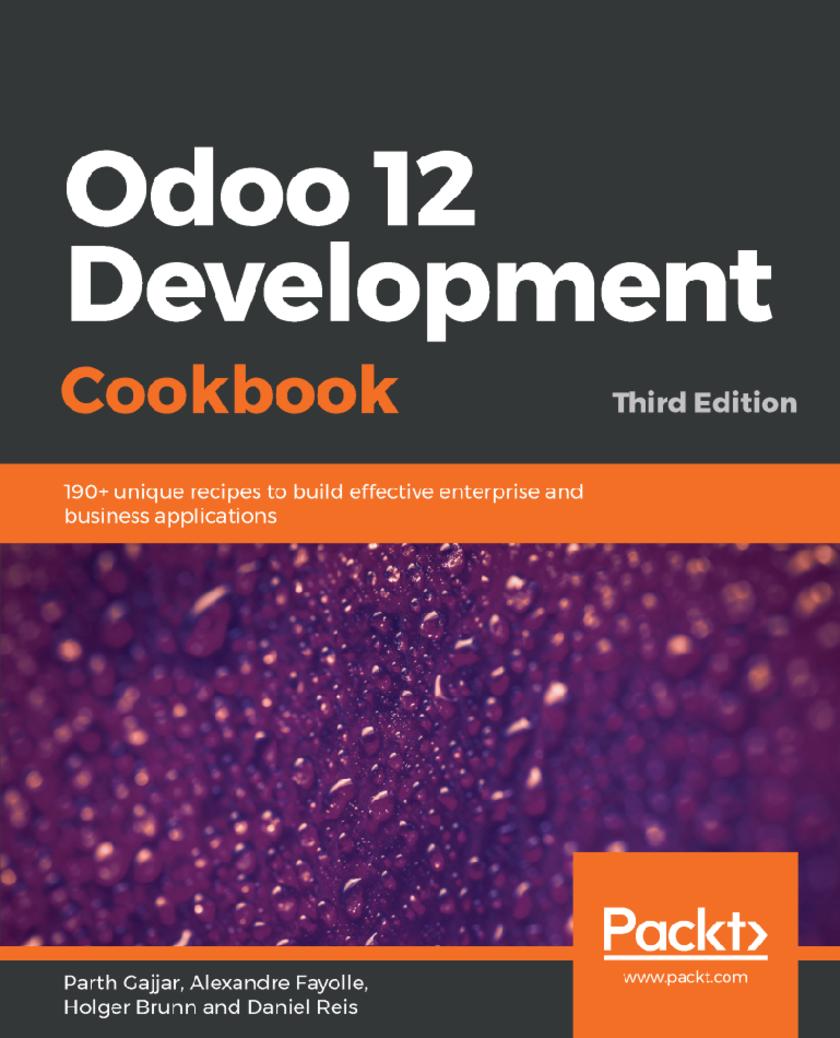
Odoo 12 Development Cookbook
¥79.56
Build customized solutions for your business using the latest features of Odoo 12 and Python Key Features * Get up to speed with Odoo 12 to create custom and reusable modules * Interconnect your application with other systems by implementing web APIs * Understand the mechanisms powering the Odoo framework and Odoo.sh to build robust enterprises Book Description Odoo is a powerful framework known for rapid application development. Its latest release, Odoo 12, introduces tons of new features. With this book, you’ll learn how to develop powerful Odoo applications from scratch, using all the latest features. This Odoo cookbook starts by covering Odoo installation and deployment on the server. Next, you’ll explore the Odoo framework with real-world examples. You’ll create a new Odoo module from the ground up and progress to advanced framework concepts. You’ll also learn how to modify existing applications, including Point of Sale (POS). This book is not just limited to backend development; the advanced JavaScript recipes for creating new views and widgets will help you build beautiful UI elements. As you move forward, you’ll gain insights into website development and become a quality Odoo developer by studying performance optimization, debugging, and automated tests. Finally, you’ll learn the latest concepts like multi-website, In-App Purchasing (IAP), Odoo.sh, and IoT Box. By the end of the book, you’ll have all the knowledge you need to build powerful Odoo applications. The development best practices used in this book will undoubtedly come handy when you are working with the Odoo framework. What you will learn * Develop a module in the Odoo framework and modify the existing flow of any application * Build dynamic websites with Odoo CMS * Create and modify backend JavaScript components in Odoo and POS * Connect and access any object in Odoo via Remote Procedure Calls (RPC) * Illustrate the different tools available in Odoo to implement business processes for your records * Implement in-app purchase services * Manage, deploy, and test an Odoo instance with the PaaS Odoo.sh * Configure IoT Box to add and upgrade Point of Sale (POS) hardware Who this book is for If you're a Python developer who wants to develop highly efficient business applications with the latest Odoo framework, or if you just want a solution guide for all your Odoo development issues, this book is for you. Some JavaScript programming and web development experience is necessary to get the most out of this book.

MCSA Windows Server 2016 Certification Guide: Exam 70-741
¥70.84
A comprehensive certification guide that will help you prepare for the exam from day one of your preparation journey Key Features * Get well-versed with the nitty-gritty of Windows server 2016 * A practical guide towards installing, upgrading, and migrating to Windows Server 2016 * Enhance your skills with practice questions and mock tests Book Description MCSA: Windows Server 2016 is one of the most sought-after certifications for IT professionals which include working with Windows Server and performing administrative tasks around it. It targets Exam 70-740, Exam 70-741, Exam 70-742 and Exam 70-743 certifications and the demand for these certifications is increasingly high. This book will start with installation, upgrade and migration to Windows Server 2016, cover imaging and deployment and proceed with High Availability and Clustering. Then we will deep dive into fundamental concepts like Core networking, DNS, DHCP, Storage and proceed to Hyper-V, Network Access and Distributed File System. It will also explain Advanced Networking topics such as Software Defined Networking and High-Performance Networking. Furthermore, it will also cover advanced Identity topics in Windows Server 2016 such as Active Directory installation and configuration, Group Policy, Active Directory Certificate Services, and Active Directory Federation Services and Rights Management. Towards the end of this book, test questions and mock preparation items will help in preparing for the certifications with more ease. By the end of this book, you will be able to complete MCSA: Windows Server 2016 certification with more confidence. What you will learn * Prepare for exam 70-741 Networking with Windows Server 2016 * Learn to apply the technology to real-world examples * Learn core networking, name resolution and connectivity technologies in Windows Server 2016. * Get prepared for exam 70-742 Identity with Windows Server 2016 * Get ways to clear the exam 70-743 Upgrading Your Skills to MCSA: Windows Server 2016 * Practice critical skills and test your knowledge of the objectives of all three MCSA exams Who this book is for This book is targeted towards system administrators or windows server administrators who are interested in clearing the MCSA certification with ease.
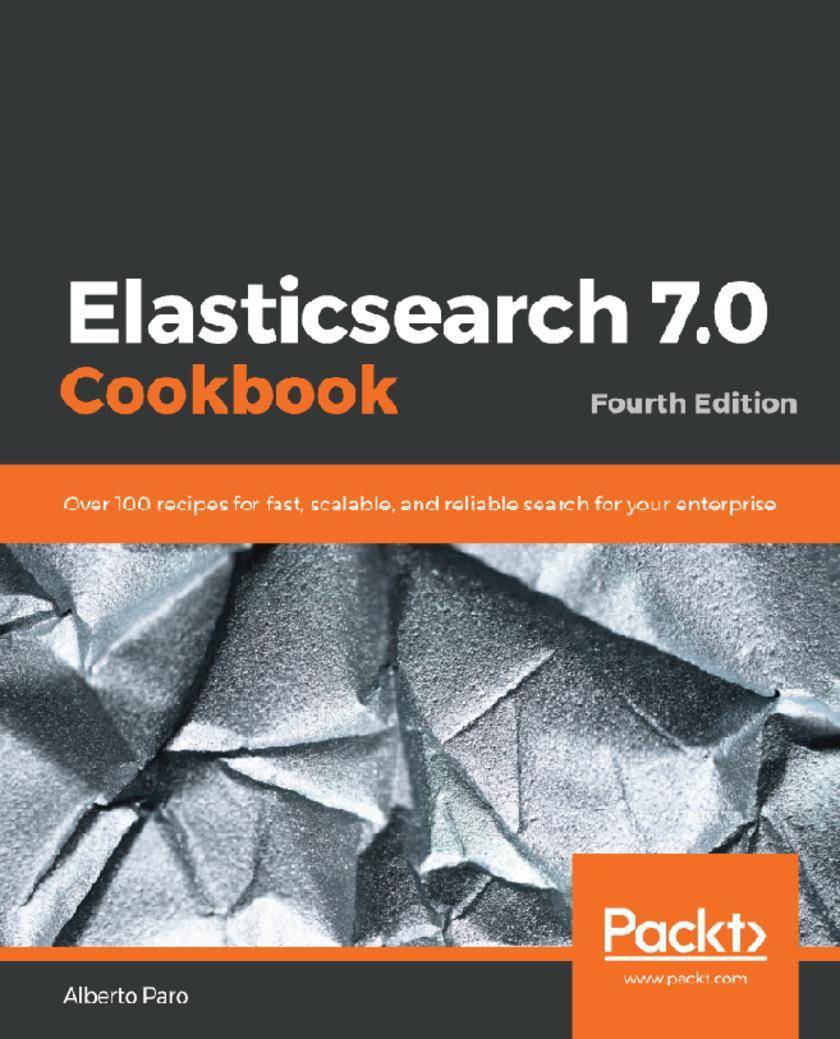
Elasticsearch 7.0 Cookbook
¥88.28
Search, analyze, and manage data effectively with Elasticsearch 7 Key Features * Extend Elasticsearch functionalities and learn how to deploy on Elastic Cloud * Deploy and manage simple Elasticsearch nodes as well as complex cluster topologies * Explore the capabilities of Elasticsearch 7 with easy-to-follow recipes Book Description Elasticsearch is a Lucene-based distributed search server that allows users to index and search unstructured content with petabytes of data. With this book, you'll be guided through comprehensive recipes on what's new in Elasticsearch 7, and see how to create and run complex queries and analytics. Packed with recipes on performing index mapping, aggregation, and scripting using Elasticsearch, this fourth edition of Elasticsearch Cookbook will get you acquainted with numerous solutions and quick techniques for performing both every day and uncommon tasks such as deploying Elasticsearch nodes, integrating other tools to Elasticsearch, and creating different visualizations. You will install Kibana to monitor a cluster and also extend it using a variety of plugins. Finally, you will integrate your Java, Scala, Python, and big data applications such as Apache Spark and Pig with Elasticsearch, and create efficient data applications powered by enhanced functionalities and custom plugins. By the end of this book, you will have gained in-depth knowledge of implementing Elasticsearch architecture, and you'll be able to manage, search, and store data efficiently and effectively using Elasticsearch. What you will learn * Create an efficient architecture with Elasticsearch * Optimize search results by executing analytics aggregations * Build complex queries by managing indices and documents * Monitor the performance of your cluster and nodes * Design advanced mapping to take full control of index steps * Integrate Elasticsearch in Java, Scala, Python, and big data applications * Install Kibana to monitor clusters and extend it for plugins Who this book is for If you’re a software engineer, big data infrastructure engineer, or Elasticsearch developer, you'll find this book useful. This Elasticsearch book will also help data professionals working in the e-commerce and FMCG industry who use Elastic for metrics evaluation and search analytics to get deeper insights for better business decisions. Prior experience with Elasticsearch will help you get the most out of this book.
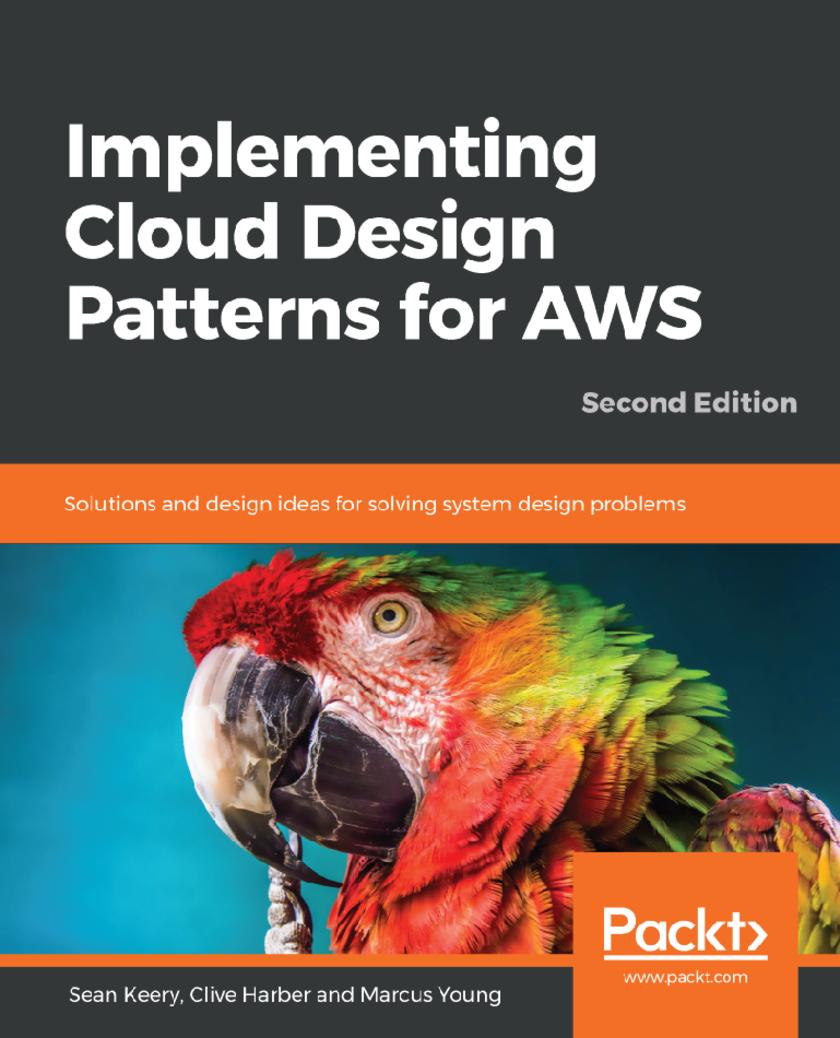
Implementing Cloud Design Patterns for AWS
¥70.84
Create highly efficient design patterns for scalability, redundancy, and high availability in the AWS Cloud Key Features * Build highly robust systems using the cloud infrastructure * Make web applications resilient against scheduled and accidental downtime * Explore and apply Amazon-provided services in unique ways to solve common design problems Book Description Whether you're just getting your feet wet in cloud infrastructure or already creating complex systems, this book will guide you through using the patterns to fit your system needs. Starting with patterns that cover basic processes such as source control and infrastructure-as-code, the book goes on to introduce cloud security practices. You'll then cover patterns of availability and scalability and get acquainted with the ephemeral nature of cloud environments. You'll also explore advanced DevOps patterns in operations and maintenance, before focusing on virtualization patterns such as containerization and serverless computing. In the final leg of your journey, this book will delve into data persistence and visualization patterns. You'll get to grips with architectures for processing static and dynamic data, as well as practices for managing streaming data. By the end of this book, you will be able to design applications that are tolerant of underlying hardware failures, resilient against an unexpected influx of data, and easy to manage and replicate. What you will learn * Implement scaling policies on schedules, influxes in traffic, and deep health checks * Make complete use of highly available and redundant storage * Design content delivery networks to improve user experience * Optimize databases through caching and sharding * Apply patterns to solve common problems * Implement repeatable processes for deploying systems Who this book is for If you’re an architect, solution provider, or DevOps community member looking to implement repeatable patterns for deploying and maintaining services in the Amazon cloud infrastructure, this book is for you. You’ll need prior experience of using AWS understand key concepts covered in the book, as it focuses on the patterns rather than the basics of using AWS.

OpenCV 4 for Secret Agents
¥70.84
Turn futuristic ideas about computer vision and machine learning into demonstrations that are both functional and entertaining Key Features * Build OpenCV 4 apps with Python 2 and 3 on desktops and Raspberry Pi, Java on Android, and C# in Unity * Detect, classify, recognize, and measure real-world objects in real-time * Work with images from diverse sources, including the web, research datasets, and various cameras Book Description OpenCV 4 is a collection of image processing functions and computer vision algorithms. It is open source, supports many programming languages and platforms, and is fast enough for many real-time applications. With this handy library, you’ll be able to build a variety of impressive gadgets. OpenCV 4 for Secret Agents features a broad selection of projects based on computer vision, machine learning, and several application frameworks. To enable you to build apps for diverse desktop systems and Raspberry Pi, the book supports multiple Python versions, from 2.7 to 3.7. For Android app development, the book also supports Java in Android Studio, and C# in the Unity game engine. Taking inspiration from the world of James Bond, this book will add a touch of adventure and computer vision to your daily routine. You’ll be able to protect your home and car with intelligent camera systems that analyze obstacles, people, and even cats. In addition to this, you’ll also learn how to train a search engine to praise or criticize the images that it finds, and build a mobile app that speaks to you and responds to your body language. By the end of this book, you will be equipped with the knowledge you need to advance your skills as an app developer and a computer vision specialist. What you will learn * Detect motion and recognize gestures to control a smartphone game * Detect car headlights and estimate their distance * Detect and recognize human and cat faces to trigger an alarm * Amplify motion in a real-time video to show heartbeats and breaths * Make a physics simulation that detects shapes in a real-world drawing * Build OpenCV 4 projects in Python 3 for desktops and Raspberry Pi * Develop OpenCV 4 Android applications in Android Studio and Unity Who this book is for If you are an experienced software developer who is new to computer vision or machine learning, and wants to study these topics through creative projects, then this book is for you. The book will also help existing OpenCV users who want upgrade their projects to OpenCV 4 and new versions of other libraries, languages, tools, and operating systems. General familiarity with object-oriented programming, application development, and usage of operating systems (OS), developer tools, and the command line is required.
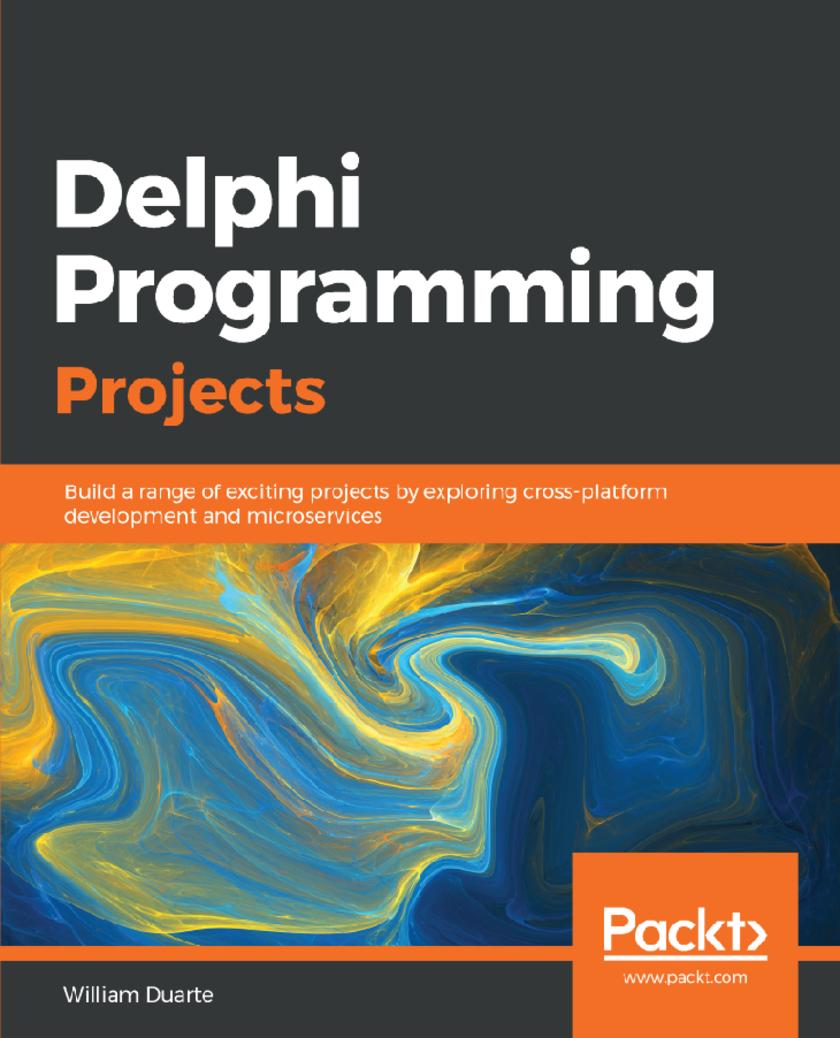
Delphi Programming Projects
¥70.84
Improve your Delphi programming skills by building robust applications for Android, iOS, and Windows platform Key Features * Build responsive user interfaces (UIs) for desktop and mobile with FireMonkey * Implement a microservices architecture using the Rapid Application Development(RAD) server * Create clones of popular applications like Instagram and Facebook using Delphi 10.3 Book Description Delphi is a cross-platform programming language and software development kit that supports rapid application development for Microsoft Windows, Apple Mac OS X, Android, and iOS. With the help of seven practical projects, this book will guide you through the best practices, Delphi Run-Time Library (RTL) resources, and design patterns. Whether you use the Visual Component Library (VCL) or FireMonkey (FMX) framework, these design patterns will be implemented in the same way in Delphi, using Object Pascal. In the first few chapters, you will explore advanced features that will help you build rich applications using the same code base for both mobile and desktop projects. In addition to this, you’ll learn how to implement microservice architecture in Delphi. As you get familiar with the various aspects of Delphi, you will no longer need to maintain source code for similar projects, program business rules on screens, or fill your forms with data access components. By the end of this book, you will have gained an understanding of the principles of clean code and become proficient in building robust and scalable applications in Delphi. What you will learn * Get to grips with the advanced features of RTL * Understand how to deal with the paradigm change between multiplatform projects * Build rich interfaces with Google's Material Design features * Understand how to implement design patterns in Delphi * Turn a mobile device into a remote controller with app tethering technology * Build a multi-database system using VCL Who this book is for This book is for developers, programmers, and IT professionals who want to learn the best market practices by implementing practical projects. Prior knowledge of the Delphi language is a must.
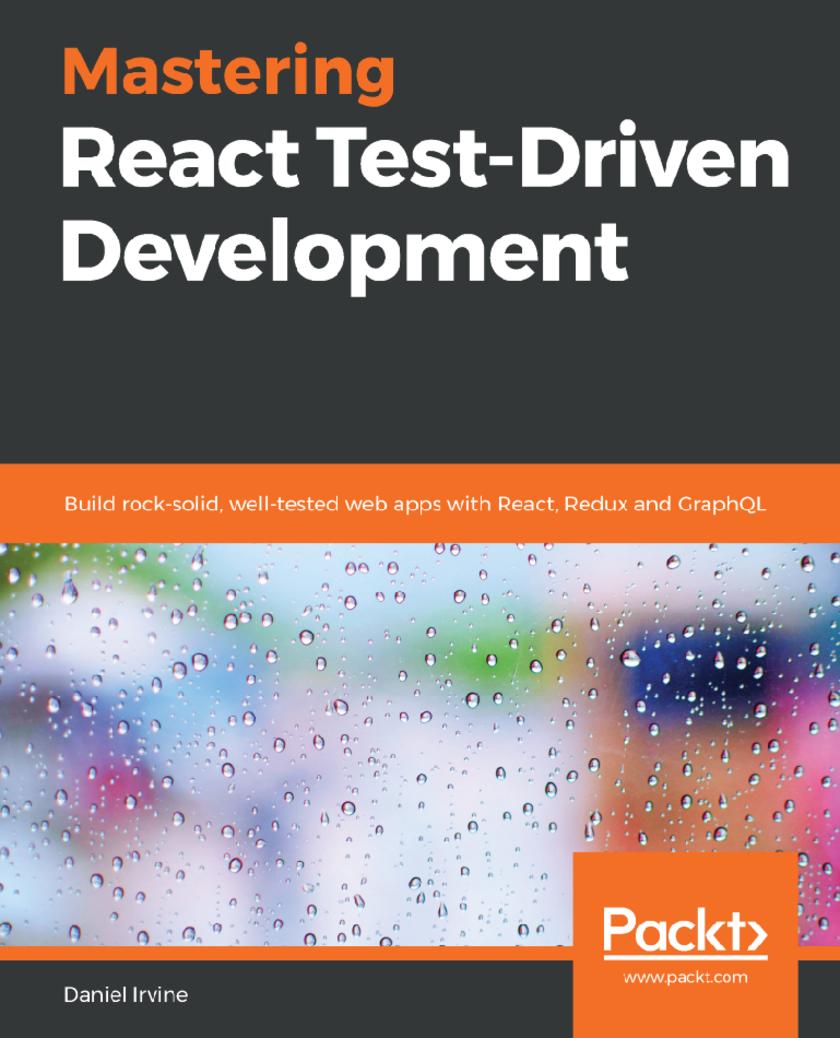
Mastering React Test-Driven Development
¥70.84
Implement TDD for your React applications using Jest, React Router, Redux, and GraphQL/Relay. Learn BDD and end-to-end acceptance testing with CucumberJS and Puppeteer. Key Features * Learn the TDD process using the React framework * Build complex, real-world applications with a pragmatic approach to TDD * Use Cucumber for acceptance and BDD testing, bringing TDD to the wider team Book Description Many programmers are aware of TDD but struggle to apply it beyond basic examples. This book teaches how to build complex, real-world applications using Test-Driven Development (TDD). It takes a first principles approach to the TDD process using plain Jest and includes test-driving the integration of libraries including React Router, Redux, and Relay (GraphQL). Readers will practice systematic refactoring while building out their own test framework, gaining a deep understanding of TDD tools and techniques. They will learn how to test-drive features such as client- and server-side form validation, data filtering and searching, navigation and user workflow, undo/redo, animation, LocalStorage access, WebSocket communication, and querying GraphQL endpoints. The book covers refactoring codebases to use the React Router and Redux libraries. via TDD. Redux is explored in depth, with reducers, middleware, sagas, and connected React components. The book also covers acceptance testing using Cucumber and Puppeteer. The book is fully up to date with React 16.9 and has in-depth coverage of hooks and the ‘act’ test helper. What you will learn * Build test-driven applications using React 16.9+ and Jest * Build complete web applications using a variety of HTML input elements * Understand the different types of test double and when to apply them * Test-drive the Integration of libraries such as React Router, Redux, and Relay (GraphQL) * Learn when to be pragmatic and how to apply TDD shortcuts * Test-drive interaction with browser APIs including fetch and WebSockets * Use Cucumber.js and Puppeteer to build BDD-style acceptance tests for your applications * Build and test async Redux code using redux-saga and expect-redux Who this book is for The target audience for this book is JavaScript developers who are looking to implement test-driven and behavior-driven approaches for their React applications.
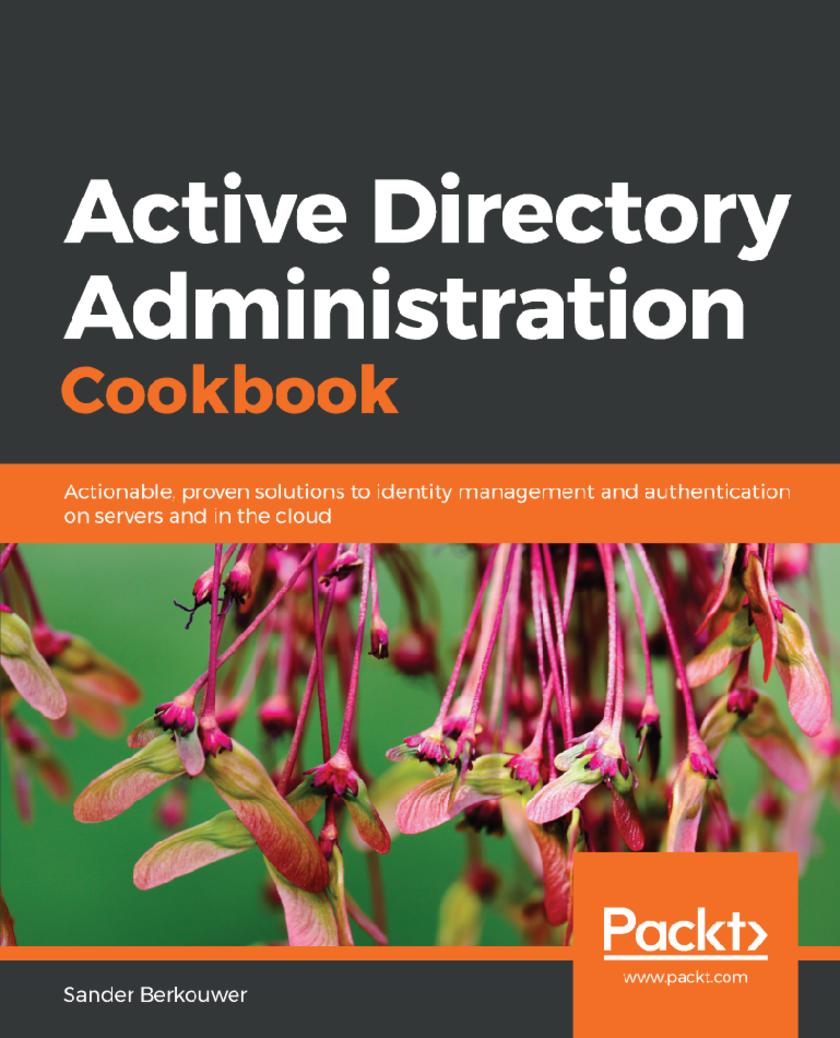
Active Directory Administration Cookbook
¥79.56
Learn the intricacies of managing Azure AD, Azure AD Connect as well as Active Directory for administration on cloud and Windows Server 2019 Key Features * Expert solutions for the federation, certificates, security, and monitoring with Active Directory * Explore Azure AD and AD Connect for effective administration on cloud * Automate security tasks using Active Directory and PowerShell Book Description Active Directory is an administration system for Windows administrators to automate network, security and access management tasks in the Windows infrastructure. This book starts off with a detailed focus on forests, domains, trusts, schemas and partitions. Next, you learn how to manage domain controllers, organizational units and the default containers. Going forward, you deep dive into managing Active Directory sites as well as identifying and solving replication problems. The next set of chapters covers the different components of Active Directory and discusses the management of users, groups and computers. You also go through recipes that help you manage your Active Directory domains, manage user and groups objects and computer accounts, expiring group memberships and group Managed Service Accounts with PowerShell. You learn how to work with Group Policy and how to get the most out of it. The last set of chapters covers federation, security and monitoring. You will also learn about Azure Active Directory and how to integrate on-premises Active Directory with Azure AD. You learn how Azure AD Connect synchronization works, which will help you manage Azure AD. By the end of the book, you have learned in detail about Active Directory and Azure AD, too. What you will learn * Manage new Active Directory features, such as the Recycle Bin, group Managed Service Accounts, and fine-grained password policies * Work with Active Directory from the command line and use Windows PowerShell to automate tasks * Create and remove forests, domains, and trusts * Create groups, modify group scope and type, and manage memberships * Delegate control, view and modify permissions * Optimize Active Directory and Azure AD in terms of security Who this book is for This book will cater to administrators of existing Active Directory Domain Services environments and/or Azure AD tenants, looking for guidance to optimize their day-to-day effectiveness. Basic networking and Windows Server Operating System knowledge would come in handy.
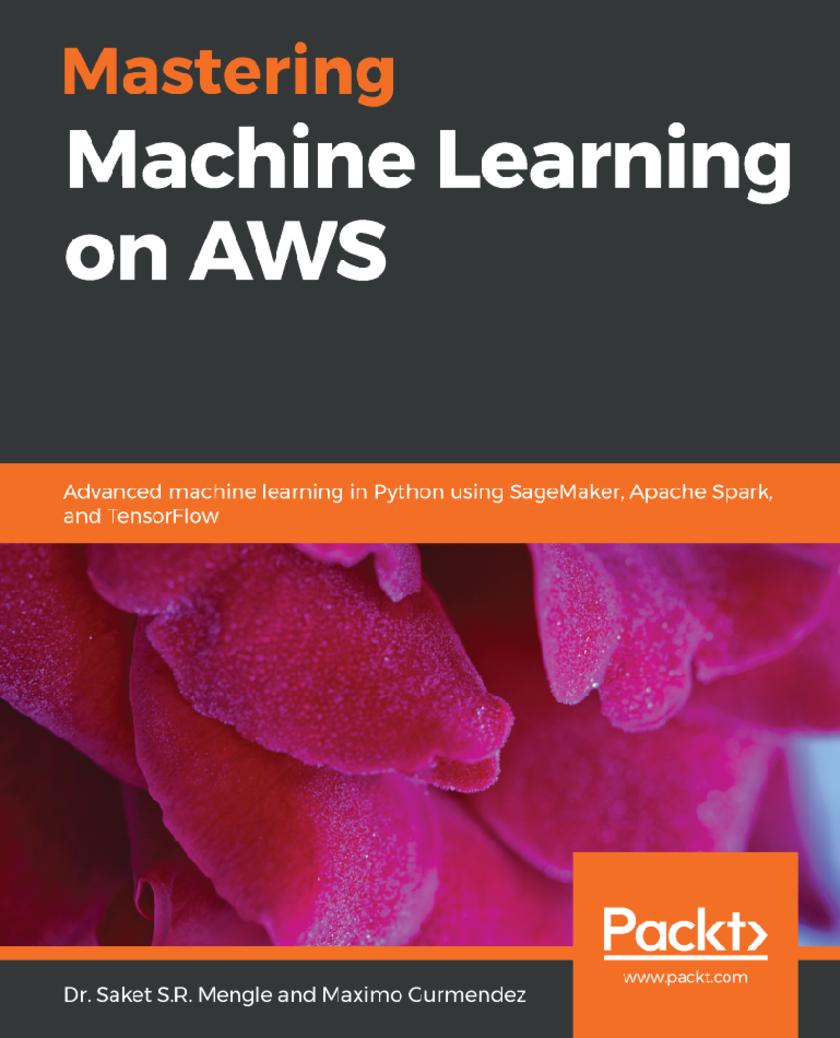
Mastering Machine Learning on AWS
¥62.12
Gain expertise in ML techniques with AWS to create interactive apps using SageMaker, Apache Spark, and TensorFlow. Key Features * Build machine learning apps on Amazon Web Services (AWS) using SageMaker, Apache Spark and TensorFlow * Learn model optimization, and understand how to scale your models using simple and secure APIs * Develop, train, tune and deploy neural network models to accelerate model performance in the cloud Book Description AWS is constantly driving new innovations that empower data scientists to explore a variety of machine learning (ML) cloud services. This book is your comprehensive reference for learning and implementing advanced ML algorithms in AWS cloud. As you go through the chapters, you’ll gain insights into how these algorithms can be trained, tuned and deployed in AWS using Apache Spark on Elastic Map Reduce (EMR), SageMaker, and TensorFlow. While you focus on algorithms such as XGBoost, linear models, factorization machines, and deep nets, the book will also provide you with an overview of AWS as well as detailed practical applications that will help you solve real-world problems. Every practical application includes a series of companion notebooks with all the necessary code to run on AWS. In the next few chapters, you will learn to use SageMaker and EMR Notebooks to perform a range of tasks, right from smart analytics, and predictive modeling, through to sentiment analysis. By the end of this book, you will be equipped with the skills you need to effectively handle machine learning projects and implement and evaluate algorithms on AWS. What you will learn * Manage AI workflows by using AWS cloud to deploy services that feed smart data products * Use SageMaker services to create recommendation models * Scale model training and deployment using Apache Spark on EMR * Understand how to cluster big data through EMR and seamlessly integrate it with SageMaker * Build deep learning models on AWS using TensorFlow and deploy them as services * Enhance your apps by combining Apache Spark and Amazon SageMaker Who this book is for This book is for data scientists, machine learning developers, deep learning enthusiasts and AWS users who want to build advanced models and smart applications on the cloud using AWS and its integration services. Some understanding of machine learning concepts, Python programming and AWS will be beneficial.
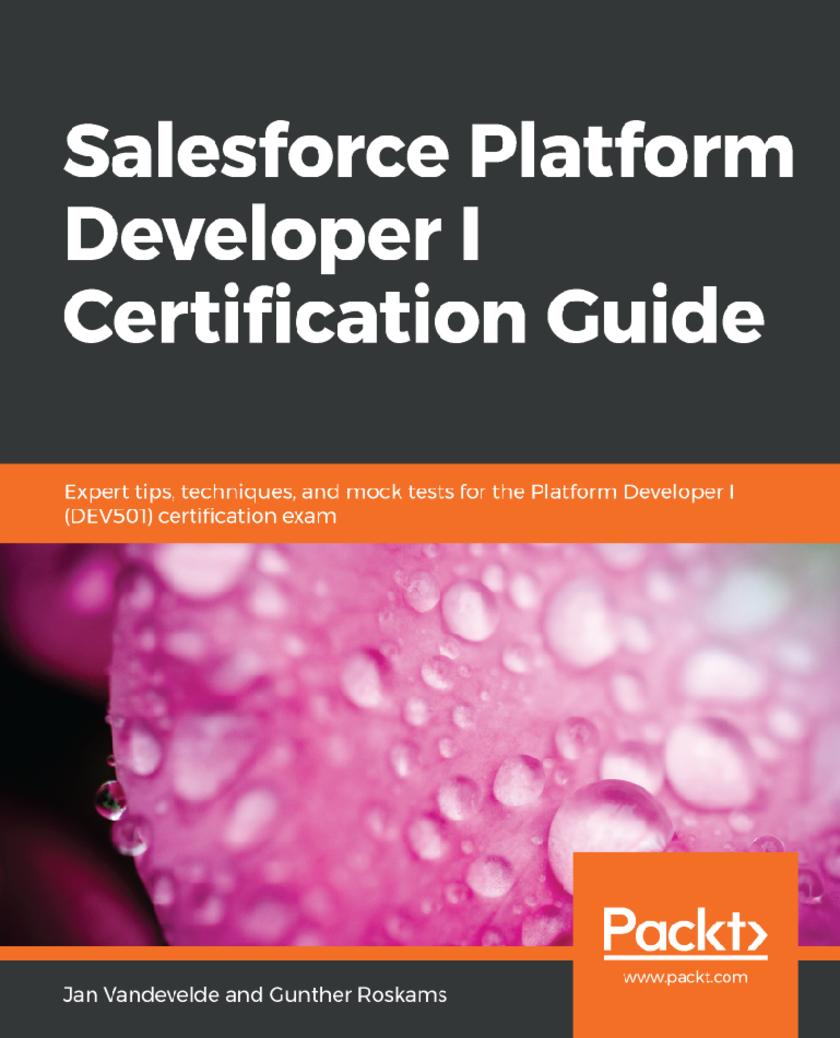
Salesforce Platform Developer I Certification Guide
¥70.84
Build and deploy scalable applications on the Salesforce Lightning Platform using the latest features of Spring '19 Key Features * An end-to end-guide with practice tests to help you achieve the Salesforce Platform Developer certification * Design data models, user interfaces, and business logic for your custom applications * Understand the complete development life cycle from designing to testing Book Description Salesforce Lightning Platform, used to build enterprise apps, is being increasingly adopted by admins, business analysts, consultants, architects, and especially developers. With this Salesforce certification, you'll be able to enhance your development skills and become a valuable member of your organization. This certification guide is designed to be completely aligned with the official exam study guide for the latest Salesforce Certified Platform Developer I release and includes updates from Spring '19. Starting with Salesforce fundamentals and performing data modeling and management, you’ll progress to automating logic and processes and working on user interfaces with Salesforce components. Finally, you'll learn how to work with testing frameworks, perform debugging, and deploy metadata, and get to grips with useful tips and tricks. Each chapter concludes with sample questions that are commonly found in the exam, and the book wraps up with mock tests to help you prepare for the DEV501 certification exam. By the end of the book, you’ll be ready to take the exam and earn your Salesforce Certified Platform Developer I certification. What you will learn * Solve sample questions and mock tests and work with exam patterns * Gain an understanding of declarative Salesforce tools such as Process Builder, flows, and many more * Code in Salesforce using the Developer Console and IDEs * Grasp the basics of object-oriented programming * Write Apex classes, Visualforce pages, and Apex test classes with easy-to-follow steps * Explore the different deployment tools that you can use to push metadata to different environments * Build custom declarative apps and programs on Force.com platforms Who this book is for The Salesforce Platform Developer I Certification Guide is for you if you want to learn how to develop and deploy business logic and user interfaces using the capabilities of the Lightning Platform. No prior knowledge of Apex programming is required.
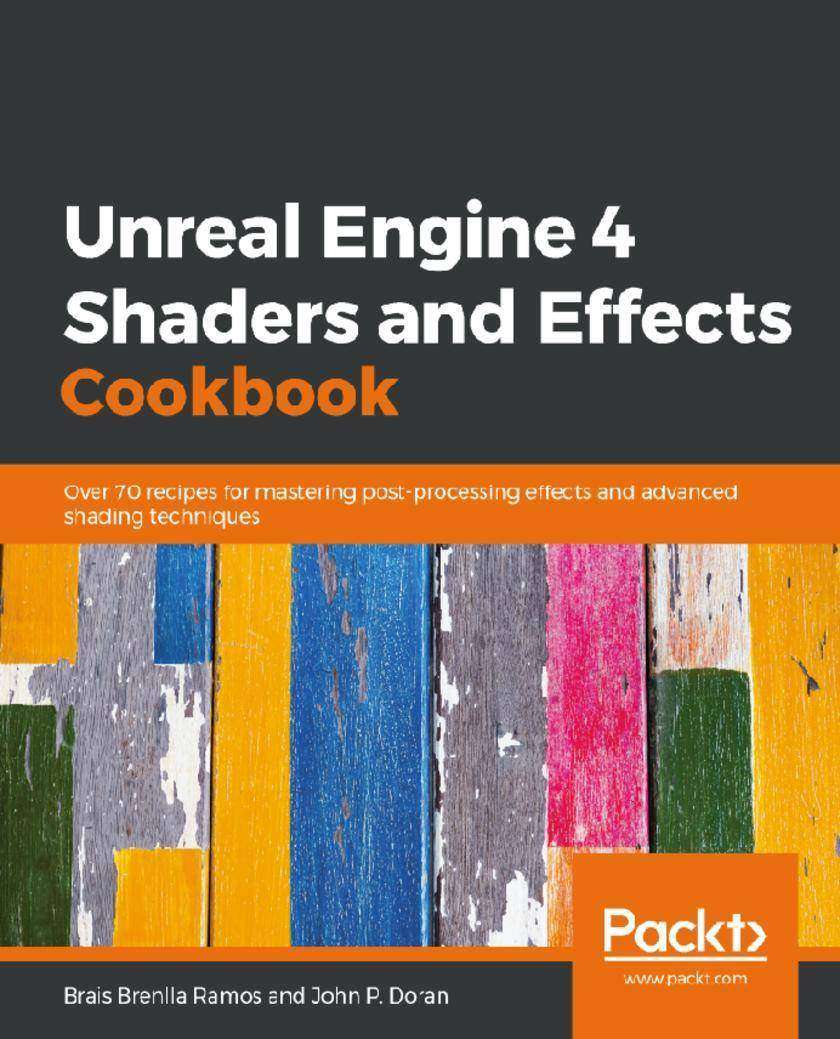
Unreal Engine 4 Shaders and Effects Cookbook
¥70.84
Build optimized, efficient, and real-time applications that are production-ready using Unreal Engine's Material Editor Key Features * Create stunning visual effects for 3D games and high-quality graphics * Design efficient Shaders for mobile platforms without sacrificing their realism * Discover what goes into the structure of Shaders and why lighting works the way it does Book Description Unreal Engine 4 is a powerful game engine, one which has seen a recent boost in widespread adoption thanks to its ease of use and the powerful rendering pipeline that it packs. Seeing as how it's relatively easy to create stunning presentations and visuals, Unreal has quickly become a strong contender in industries where this kind of software had been previously denied entry. With that in mind, this book aims to help you get the most out of Unreal Engine 4 - from creating awe-inspiring graphics to delivering optimized experiences to your users. This is possible thanks to a mixture of hands-on experience with real materials and the theory behind them. You will immediately know how to create that material that you want to display, and you'll also end up with the knowledge that will let you know how to control it. All of this will be done without losing sight of two key components of any real-time application - optimization, and efficiency. The materials that you create will be light and efficient, and they will vary depending on your target platform. You'll know which techniques can be used in any kind of device and which ones should be kept to high-end machines, giving you the confidence to tackle any material-related task that you can imagine. Hop onboard and discover how! What you will learn * Master Unreal Engine's rendering pipeline for developing real-time graphics * Use physically based rendering (PBR) for building materials and lighting solutions * Build optimized materials for games targeting multiple platforms * Understand Unreal Engine's node and functions for creating desirable effects * Design and build production-ready shaders * Explore Unreal Engine's Material Editor for building complex materials and textures Who this book is for This book is for developers who want to create their first Shaders in Unreal Engine 4 or wish to take their game to a whole new level by adding professional post-processing effects. A solid understanding of Unreal is required to get the most from this book.
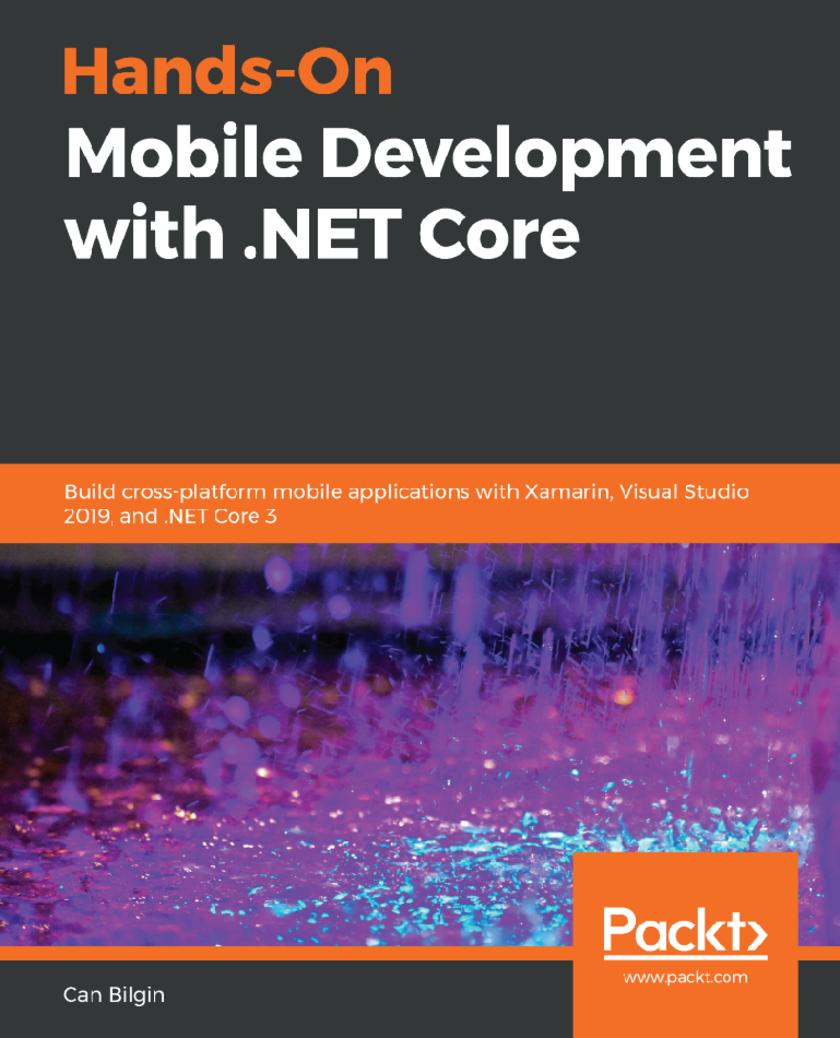
Hands-On Mobile Development with .NET Core
¥70.84
Develop native applications for multiple mobile and desktop platforms including but not limited to iOS, Android, and UWP with the Xamarin framework and Xamarin.Forms Key Features * Understand .NET Core and its cross-platform development philosophy * Build Android, iOS, and Windows mobile applications with C#, .NET Core, and Azure Cloud Services * Bring Artificial Intelligence capabilities into your mobile applications with Azure AI Book Description .NET Core is the general umbrella term used for Microsoft’s cross-platform toolset. Xamarin used for developing mobile applications, is one of the app model implementations for .NET Core infrastructure. In this book, you will learn how to design, architect, and develop highly attractive, maintainable, efficient, and robust mobile applications for multiple platforms, including iOS, Android, and UWP, with the toolset provided by Microsoft using Xamarin, .NET Core, and Azure Cloud Services. This book will take you through various phases of application development with Xamarin, from environment setup, design, and architecture to publishing, using real-world scenarios. Throughout the book, you will learn how to develop mobile apps using Xamarin, Xamarin.Forms and .NET Standard; implement a webbased backend composed of microservices with .NET Core using various Azure services including but not limited to Azure App Services, Azure Active Directory, Notification Hub, Logic Apps, and Azure Functions, Cognitive Services; create data stores using popular database technologies such as Cosmos DB, SQL and Realm. Towards the end, the book will help developers to set up an efficient and maintainable development pipeline to manage the application life cycle using Visual Studio App Center and Visual Studio Services. What you will learn * Implement native applications for multiple mobile and desktop platforms * Understand and use various Azure Services with .NET Core * Make use of architectural patterns designed for mobile and web applications * Understand the basic Cosmos DB concepts * Understand how different app models can be used to create an app service * Explore the Xamarin and Xamarin.Forms UI suite with .NET Core for building mobile applications Who this book is for This book is for mobile developers who wish to develop cross-platform mobile applications. Programming experience with C# is required. Some knowledge and understanding of core elements and cross-platform application development with .NET is required.
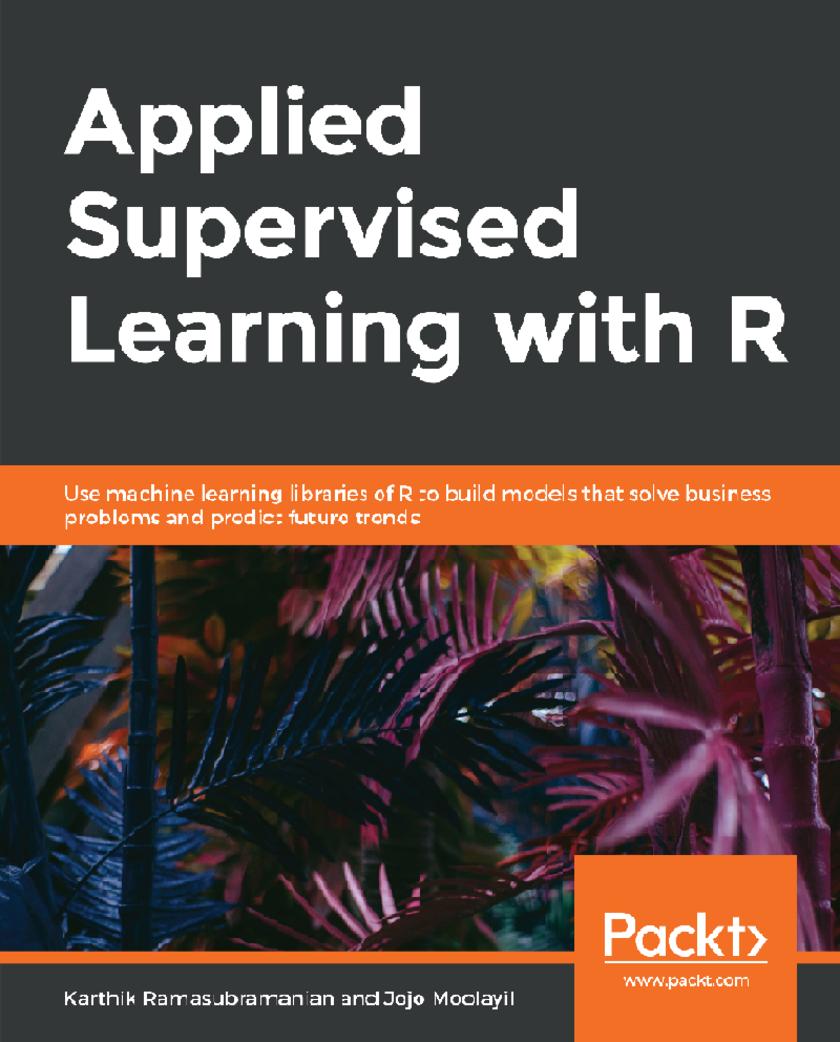
Applied Supervised Learning with R
¥79.56
Explore supervised machine learning with R by studying popular real-world uses cases such as object detection in driverless cars, customer churn, and default prediction Key Features * Study supervised learning algorithms by using real-world datasets * Fine tune optimal parameters with hyperparameter optimization * Select the best algorithm using the model evaluation framework Book Description R provides excellent visualization features that are essential for exploring data before using it in automated learning. Applied Supervised Learning with R helps you cover the complete process of employing R to develop applications using supervised machine learning algorithms for your business needs. The book starts by helping you develop your analytical thinking to create a problem statement using business inputs and domain research. You will then learn different evaluation metrics that compare various algorithms, and later progress to using these metrics to select the best algorithm for your problem. After finalizing the algorithm you want to use, you will study the hyperparameter optimization technique to fine-tune your set of optimal parameters. To prevent you from overfitting your model, a dedicated section will even demonstrate how you can add various regularization terms. By the end of this book, you will have the advanced skills you need for modeling a supervised machine learning algorithm that precisely fulfills your business needs. What you will learn * Develop analytical thinking to precisely identify a business problem * Wrangle data with dplyr, tidyr, and reshape2 * Visualize data with ggplot2 * Validate your supervised machine learning model using k-fold * Optimize hyperparameters with grid and random search, and Bayesian optimization * Deploy your model on Amazon Web Services (AWS) Lambda with plumber * Improve your model’s performance with feature selection and dimensionality reduction Who this book is for This book is specially designed for novice and intermediate-level data analysts, data scientists, and data engineers who want to explore different methods of supervised machine learning and its various use cases. Some background in statistics, probability, calculus, linear algebra, and programming will help you thoroughly understand and follow the content of this book.
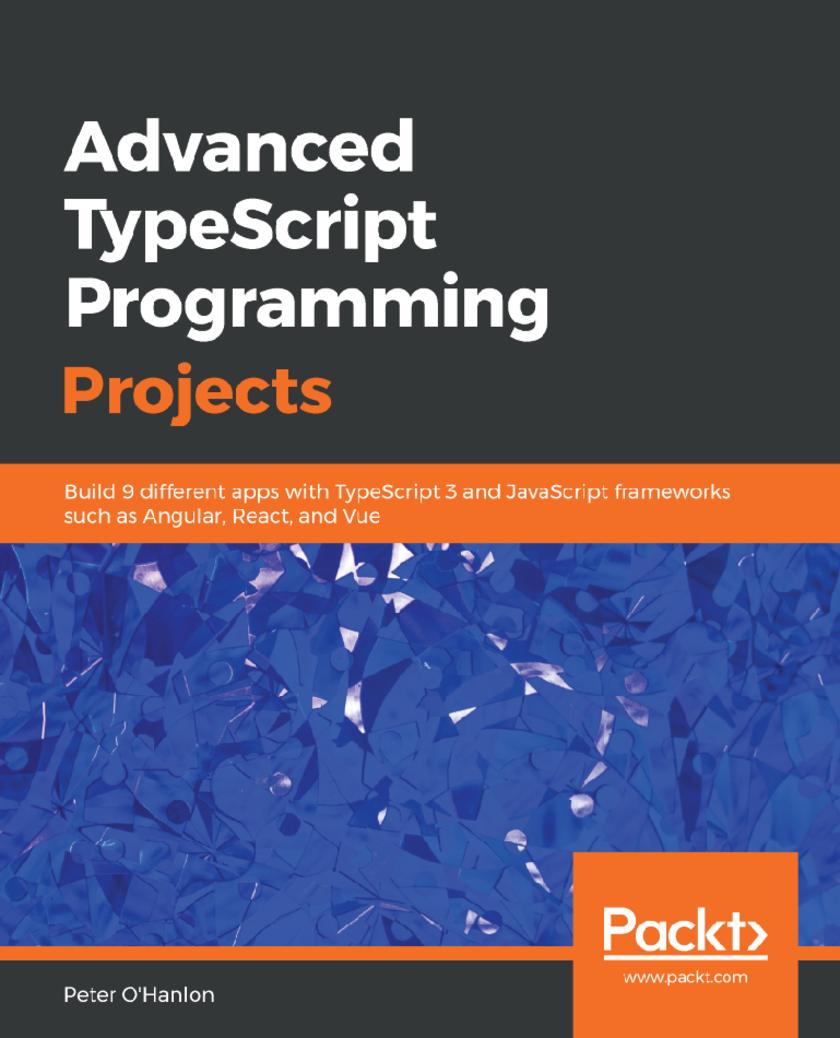
Advanced TypeScript Programming Projects
¥70.84
Gain in-depth knowledge of TypeScript and the latest ECMAScript standards by building robust web applications across different domains Key Features * Apply the cutting-edge features of TypeScript 3.0 to build high-performance, maintainable applications * Learn through practical examples of using TypeScript with popular frameworks, such as Angular and React * Focus on building high-quality applications that are modular, scalable and adaptable Book Description With the demand for ever more complex websites, the need to write robust, standard-compliant JavaScript has never been greater. TypeScript is modern JavaScript with the support of a first-class type system, which makes it simpler to write complex web systems. With this book, you’ll explore core concepts and learn by building a series of websites and TypeScript apps. You’ll start with an introduction to TypeScript features that are often overlooked in other books, before moving on to creating a simple markdown parser. You’ll then explore React and get up to speed with creating a client-side contacts manager. Next, the book will help you discover the Angular framework and use the MEAN stack to create a photo gallery. Later sections will assist you in creating a GraphQL Angular Todo app and then writing a Socket.IO chatroom. The book will also lead you through developing your final Angular project which is a mapping app. As you progress, you’ll gain insights into React with Docker and microservices. You’ll even focus on how to build an image classification program with machine learning using TensorFlow. Finally, you’ll learn to combine TypeScript and C# to create an ASP.NET Core-based music library app. By the end of this book, you’ll be able to confidently use TypeScript 3.0 and different JavaScript frameworks to build high-quality apps. What you will learn * Discover how to use TypeScript to write code using common patterns * Get to grips with using popular frameworks and libraries with TypeScript * Leverage the power of both server and client using TypeScript * Learn how to apply exciting new paradigms such as GraphQL and TensorFlow * Use popular cloud-based authenticated services * Combine TypeScript with C# to create ASP.NET Core applications Who this book is for This book is for programmers and web developers who are familiar with TypeScript and want to put their knowledge to work by building real-world complex applications. Prior experience with any other web framework is not required.
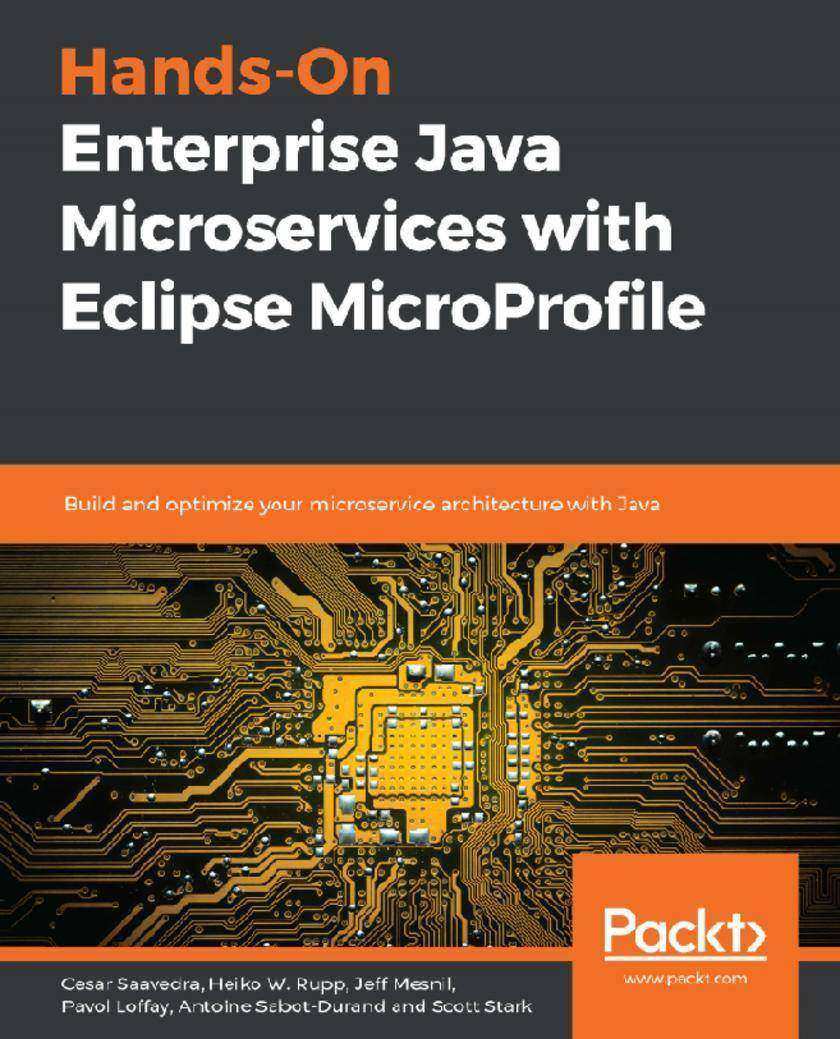
Hands-On Enterprise Java Microservices with Eclipse MicroProfile
¥63.21
An effective guide to designing, building, and deploying enterprise Java microservices with Eclipse MicroProfile Key Features * Create cloud-native microservices with ease using this detailed guide * Avoid vendor lock-in when implementing microservices using Eclipse MicroProfile * Discover why MicroProfile is a great specification for building microservices in multi-cloud environments Book Description Eclipse MicroProfile has gained momentum in the industry as a multi-vendor, interoperable, community-driven specification. It is a major disruptor that allows organizations with large investments in enterprise Java to move to microservices without spending a lot on retraining their workforce. This book is based on MicroProfile 2.2, however, it will guide you in running your applications in MicroProfile 3.0. You'll start by understanding why microservices are important in the digital economy and how MicroProfile addresses the need for enterprise Java microservices. You'll learn about the subprojects that make up a MicroProfile, its value proposition to organizations and developers, and its processes and governance. As you advance, the book takes you through the capabilities and code examples of MicroProfile’s subprojects - Config, Fault Tolerance, Health Check, JWT Propagation, Metrics, and OpenTracing. Finally, you’ll be guided in developing a conference application using Eclipse MicroProfile, and explore possible scenarios of what’s next in MicroProfile with Jakarta EE. By the end of this book, you'll have gained a clear understanding of Eclipse MicroProfile and its role in enterprise Java microservices. What you will learn * Understand why microservices are important in the digital economy * Analyze how MicroProfile addresses the need for enterprise Java microservices * Test and secure your applications with Eclipse MicroProfile * Get to grips with various MicroProfile capabilities such as OpenAPI and Typesafe REST Client * Explore reactive programming with MicroProfile Stream and Messaging candidate APIs * Discover and implement coding best practices using MicroProfile Who this book is for If you’re a Java developer who wants to create enterprise microservices, this book is for you. Familiarity with Java EE and the concept of microservices will help you get the most out of this book.
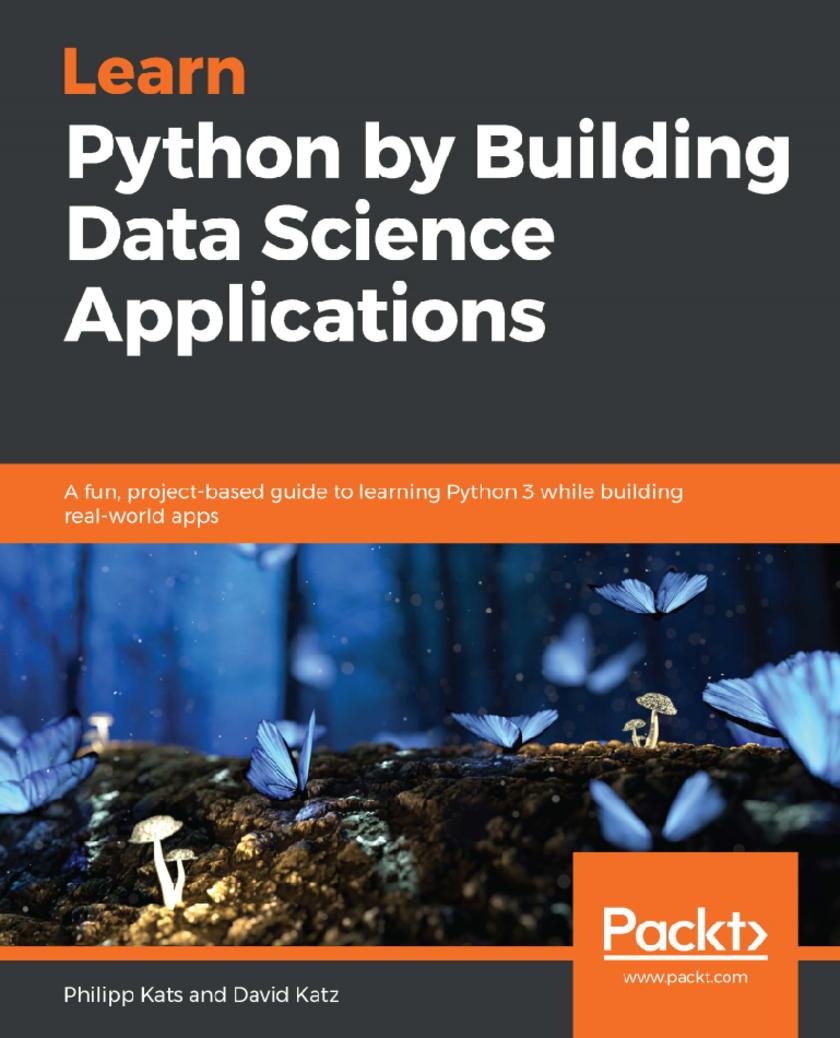
Learn Python by Building Data Science Applications
¥63.21
Understand the constructs of the Python programming language and use them to build data science projects Key Features * Learn the basics of developing applications with Python and deploy your first data application * Take your first steps in Python programming by understanding and using data structures, variables, and loops * Delve into Jupyter, NumPy, Pandas, SciPy, and sklearn to explore the data science ecosystem in Python Book Description Python is the most widely used programming language for building data science applications. Complete with step-by-step instructions, this book contains easy-to-follow tutorials to help you learn Python and develop real-world data science projects. The “secret sauce” of the book is its curated list of topics and solutions, put together using a range of real-world projects, covering initial data collection, data analysis, and production. This Python book starts by taking you through the basics of programming, right from variables and data types to classes and functions. You’ll learn how to write idiomatic code and test and debug it, and discover how you can create packages or use the range of built-in ones. You’ll also be introduced to the extensive ecosystem of Python data science packages, including NumPy, Pandas, scikit-learn, Altair, and Datashader. Furthermore, you’ll be able to perform data analysis, train models, and interpret and communicate the results. Finally, you’ll get to grips with structuring and scheduling scripts using Luigi and sharing your machine learning models with the world as a microservice. By the end of the book, you’ll have learned not only how to implement Python in data science projects, but also how to maintain and design them to meet high programming standards. What you will learn * Code in Python using Jupyter and VS Code * Explore the basics of coding – loops, variables, functions, and classes * Deploy continuous integration with Git, Bash, and DVC * Get to grips with Pandas, NumPy, and scikit-learn * Perform data visualization with Matplotlib, Altair, and Datashader * Create a package out of your code using poetry and test it with PyTest * Make your machine learning model accessible to anyone with the web API Who this book is for If you want to learn Python or data science in a fun and engaging way, this book is for you. You’ll also find this book useful if you’re a high school student, researcher, analyst, or anyone with little or no coding experience with an interest in the subject and courage to learn, fail, and learn from failing. A basic understanding of how computers work will be useful.




 购物车
购物车 个人中心
个人中心



